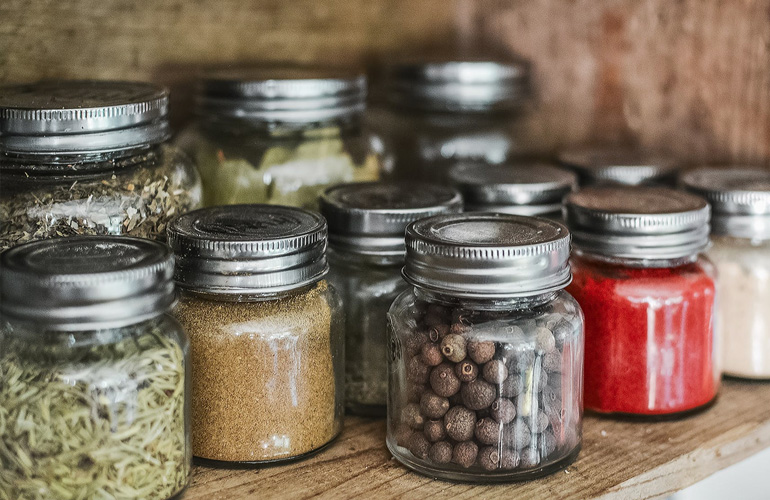Food Preservation Frequently Asked Questions

I often get questions from people about food preservation. I’ll get questions in comments of our videos, through the website, or in person. While they range in topic, there are certain specific questions I hear time and again. In this post, I’ll go through some of the more frequent questions and answer them the best I can.
Can I use a vacuum sealer to store wet foods in a mason jar?
Absolutely not.
This is one of the most serious questions I get, whether or not the person asking it realizes. It speaks to outright food safety.
You absolutely cannot use a vacuum sealer to store anything but completely dried foods in a mason jar. The reason is because it will kill you.
Vacuum sealing is not a substitute for heat canning, and I cannot stress this enough. In fact it says it all over the label and box if you buy a vacuum sealer jar attachment.
You can’t use it too can tomato sauce or stews or meats or soups or anything wet. The only thing you can use a for is completely dried foods. This includes dried grains, dehydrated vegetables, freeze dried fruits, and so forth.
If there’s any moisture in that jar, it’s going to grow bacteria, especially with meats and low acid or fatty foods. Wet food grows Botulism when left alone for too long. You’ll likely know if your food is riddled with Botulism as soon as you open that jar because of the smell and appearance. But it’s not worth the risk. Best case, you waste a ton of time and food. Worst case, you die.
Botulism and other food borne illnesses are nothing to screw around with. Don’t do it, period. If death isn’t motivation enough, I’m not sure what is.
What is the difference between dehydrating and freeze drying?
Simply put, dehydrating is using heat and air to remove moisture out of your food, while freeze drying is using cold temperatures and vacuum to remove moisture out of your food.
Dehydrating isn’t much different than letting something just sit out on the counter and let the liquid evaporate out of it. It just makes it happen faster and fast enough that the food doesn’t spoil or rot or turn dangerous in the mean time. It’s just accelerating the evaporation process.
Freeze drying is is quite a different thing. It’s using extreme cold and suction to remove the moisture out of your food through a process called sublimation. Basically it’s skipping the “liquid” stage of water dehydration. It takes moisture and evaporates it directly into gas and removing it from the food. This process leaves food much more intact, which results in food with much better flavor and texture. Visually, freeze-dried food is often nearly indistinguishable from fresh food.
Dehydrated food, on the other hand, appears shriveled, pruney, and much smaller than how it started.
What kind of dehydrator should I get?
That’s a good question, but ultimately the answer is, “That’s totally up to you.” Personally, I went with the biggest dehydrator that I could get within my budget. I went with an Excalibur 3900B. It’s a 9 tray dehydrator with an adjustable thermostat.
Different temperatures work better for different types of foods, so that was an important feature for me. I like the 9 trays because I can put a lot of stuff in there. If I’m going to run the thing for hours and hours, and go through all the effort of preparing food, I might as well do a great big batch all at once.
The Excalibur series is sold on Amazon and other stores for around $250. They make several different models. Some are smaller, some are stainless steel instead of plastic, some have different heating features. The model I have does not have a timer or off switch. As soon as you plug it in, it’s going. I will say that it has served me very well for several years. From what I’ve read, the construction is very straightforward and the parts are simple to replace if something ever breaks.
But ultimately it’s up to you. What does your budget look like? What features are important to you? Will you be dehydrating 10 strawberries a year, or will you be filling up a prepper’s pantry? My advice is to get the best one you can comfortably afford if you plan to dehydrate a lot. If you’re unsure, go and get a cheap one and try it out.
Why don’t you use Mylar bags and buckets instead of mason jars to store your dried goods?
Well, Mylar and buckets is certainly a common way to store things like grains, rice, beans, oats, and stuff like that. You can store a large quantity in a relatively compact amount of space with 5 gallon buckets. This method involves putting your food in a Mylar bag, adding some oxygen absorber packets, sealing the bag closed, and then storing the whole thing inside a closed bucket. The bag protects the food, and the bucket protects the bag.
This is a perfectly great way to store dry food. But I don’t happen to use this method most of the time. I tend to prefer divvying it up into quart mason jars and sealing them with a vacuum-sealing machine, and there are a couple reasons why:
- Once you break open that Mylar bag, you’ve just re-exposed 5 gallons of food to the air. If I want a serving or two of rice, I have to crack open about 160 servings. Then I have to think about using it up more quickly, or deal with re-bagging and re-sealing it all. With mason jars, I can crack open a smaller amount and not feel like I’ve compromised a ton of food that I won’t use right away.
- I’ve had Mylar bags fail on me on two occasions. I’ve only used Mylar bags a handful of times and for certain items, and I’ve still experienced two failures in that time. It was either either punctured, or a seam came apart. All I know is the bag was no longer sealed when I checked it some time after storing it. On the other hand, I’ve vacuum-sealed and stored absolutely hundreds of mason jars over many years, and the only time I’ve ever had a seal failure was when I sealed flour in the jars (the problem there being that the vacuum sucks some of that fine flour dust upward and it gets trapped between the seal of the lid and the top rim of the glass jar, and that little bit of powder causes the seal to fail).
- When you go the Mylar and oxygen absorber route, you have to constantly buy new Mylar bags and oxygen absorbers. They aren’t made for repeated use. Obviously once the oxygen absorber packets have done their job, you have to throw them away. But with the Mylar, you pretty much have to destroy the bag to open it. It’s not realistic to count on using them over and over again. Jars, however, can be reused indefinitely, and you don’t need to buy oxygen absorbers if vacuum-sealing. You will, however, have to buy jar lids because those are not reusable. Still, jar lids are a lot cheaper than Mylar bags and oxygen absorber packets.
How long will sealed dry goods last on the shelf?
The short answer is, “It depends.”
My personal rule of thumb is about 10 years for most dried goods. I know some of them will last a lot longer than that, such as rice, beans, and certain grains. As for vegetables, 5-10 years is where I’m pretty comfortable with. For fruits and high-sugar items, I’m probably closer to the 5 year mark where I’m comfortable. That being said, I do like to keep a few items for as long as possible so I can try them out after 10, 15, or 20 years and see how well they’ve held up. But as far as food storage that I’m depending on and that give me peace of mind? For me it’s ten years for most foods (some a big longer, some a bit shorter).
Ultimately, each individual type of food can be different, and warrants its own research and learning. Times may also vary depending on how the food was dried in the first place (dehydrated, freeze-dried, etc).
Do you have to freeze everything before you vacuum seal it in a jar or Mylar bag?
This question has come up because when I’m sealing grains like rice, I will first freeze them in my freezer for 2 or more days. The reason for this is because a lot of grains, especially those that you buy in bulk, can have insect eggs in them. Weevils and other certain kinds of little creepy crawlies lay eggs in there, and over time those eggs can hatch. If you’ve ever pulled out a bag of flour from your cupboard that’s been there for years and you see bugs crawling around them, that’s why. Those bugs were in there when you bought that flour, in egg form.
If you freeze those grains for a minimum of about 2 or 3 days, it’s said to destroy those eggs to the point where they cannot hatch. These microscopic eggs are still going to be in there, but you’ll never know they’re there any more than you do the day you buy it from the store.
So I put rice, oats, flour, and other grains into a five-gallon bucket, seal the lid tightly, and put the whole thing in the freezer. After 2 or 3 days, I remove it from the freezer and let it sit for quite awhile until the contents come back up to room temperature. People also ask why I bother putting it all into a sealed bucket, rather than tossing the whole bag that I got from the store into a freezer. Those bags are not watertight or airtight. I want to avoid condensation forming on the food I’m about to seal in a container for 20 years. It must be as dry as possible to avoid growing bacteria. So I put the grains in a bucket, seal it, freeze it, and then let it come back to room temperature before opening. Imagine a cold glass of water on a humid day, and how much condensation forms on that glass. You don’t want that to happen with your dry goods.
Is the freezing step necessary? Won’t the lack of oxygen kill anything in there? Maybe. Possibly. I don’t know 100% for sure. What I do know is that it takes very little effort for me to throw it all in a bucket and freeze it for a couple days. That’s worth the peace of mind. I’m not sure how insects that tiny work. For all I know, an insect that small can live its entire life on a molecule of oxygen. What I do know is that freezing it all for long enough will destroy the eggs and anything inside them.
One last thing to mention here: I do not freeze beans, peas, or any similar foods. This is mainly because I worry that freezing will cause them all to split. I’ve never seen a weevil in beans anyhow.

